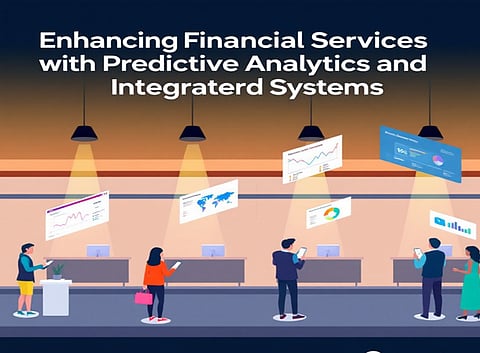

In the rapidly evolving financial services landscape, few voices articulate technological transformation as clearly as Mani Kiran Chowdary Katragadda. A seasoned industry analyst and innovator, he offers a compelling vision for the future of banking one built on predictive analytics, intelligent risk modeling, and seamless systems integration.
The financial sector is no longer just reacting to change driving it. Predictive analytics has moved from being a supportive feature to becoming the very spine of strategic decision-making. Where once data served merely as a record of past behavior, it now fuels algorithms that anticipate customer needs, forecast risks, and personalize services. This analytical pivot marks a definitive shift from traditional reactive strategies to intelligent, proactive banking.
By 2025, an estimated 85% of financial leaders consider data-derived insights essential for staying competitive. This shift in perception underlines how analytics has grown from an operational supplement to a core business driver, enabling institutions to enhance customer retention, cross-selling, and overall financial health.
Workflow integration and system-wide automation have fundamentally changed the game in modern banking. Innovative architectures now consolidate data from multiple internal and external sources, creating enriched, comprehensive customer profiles that empower banks to make split-second decisions with surgical precision. For example, integrated data pipelines now reduce manual processing by nearly 38%, significantly improving operational efficiency and enabling teams to focus on high-impact strategic tasks rather than repetitive data entry. These intelligent systems also boast remarkable uptime, scalability, and performance, demonstrating how resilient digital frameworks can empower financial institutions to remain agile and responsive even during high-volume periods such as promotional campaigns, seasonal surges, or fiscal year-end transactions.
The battleground of modern finance includes an increasingly complex array of fraud threats. Traditional rule-based systems simply can’t keep up. That’s where machine learning and behavioral analytics come in. Today’s advanced fraud detection platforms leverage ensemble learning techniques and recurrent neural networks to scrutinize transaction patterns in real-time.
What sets these systems apart is their dynamic nature: algorithms are continuously retrained using feedback from confirmed fraud cases. This adaptability translates into a dramatic reduction in false positives and fraud losses. Behavioral biometrics like keystroke rhythms and mouse movement signatures are also becoming integral to continuous authentication, offering frictionless yet secure customer experiences.
Beyond localized solutions, financial institutions are tackling the challenges of international fund management with transformative digital platforms. Sophisticated microservices architectures allow for real-time collaboration and processing across continents. These systems operate using API-first principles and containerized environments that dynamically scale to meet demand.
Workflow automation in fund management processes has significantly reduced human intervention while improving accuracy and compliance. Natural language processing tools embedded within these platforms extract contextual meaning from documents, automating everything from risk assessment to regulatory reporting.
Predictive analytics has breathed new life into risk modeling frameworks. Gone are the days of one-dimensional credit scoring. Today’s models incorporate macroeconomic trends, digital footprints, transactional histories, and behavioral signals to build comprehensive, multidimensional borrower profiles. Institutions leveraging these advanced models have reported up to 30% reductions in unexpected financial losses and significant improvements in loan portfolio quality. Machine learning further enhances credit risk assessments by uncovering subtle, nonlinear patterns that remain invisible to traditional methods. These data-driven insights are continually refined through dynamic "champion-challenger" testing frameworks, ensuring ongoing performance improvements, model robustness, and alignment with evolving regulatory standards.
Incorporating predictive analytics into daily operations represents not merely a matter of buying yet another tool; it's a systemic transformation. The very best implementations are a mixture of centralized data lakes and agile data marts with sound governance frameworks. Having cross-functional committees oversee the models in terms of the ethics of the data greatly increases analyst adoption.
On the other hand, if an organization has a dedicated team for model operations, model stability will be higher and deployment times will be sharply cut. These teams are the custodians of analytical integrity: ensuring that models continue to be performant and compliant down the road as they evolve.
Predictive analytics have produced measurable outcomes: credit losses are now down by over 27%, customer retention is up by 23%, and risk-adjusted returns are gaining in the double digits. The results from here are just budding.
Explainable AI, cloud-native systems, and edge computing—all these advances are restructuring the deployment landscape. Those institutions that use these tools gain speed and scalability, along with enhanced transparency, the very ingredients needed to navigate the ever-more-complex financial ecosystem.
With tightening regulations and climbing customer expectations, only institutions engaging in holistic transformation that combines technology with governance and strategic foresight will survive.
In conclusion, the insights of Mani Kiran Chowdary Katragadda illuminate the way forward in this evolving world where financial companies do not simply manage money but instead foresee, adapt, and uplift the banking experience for all.
